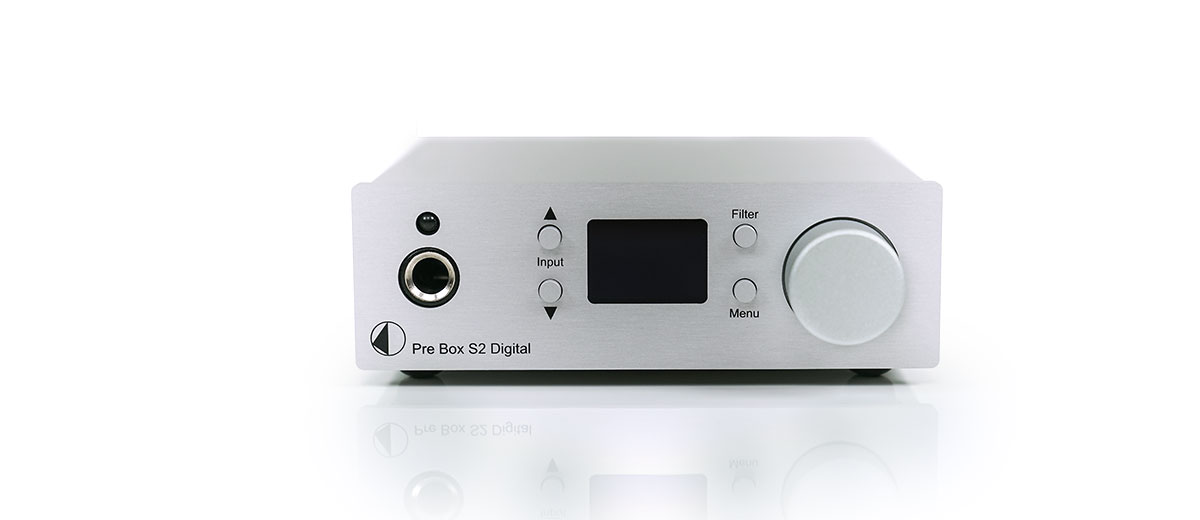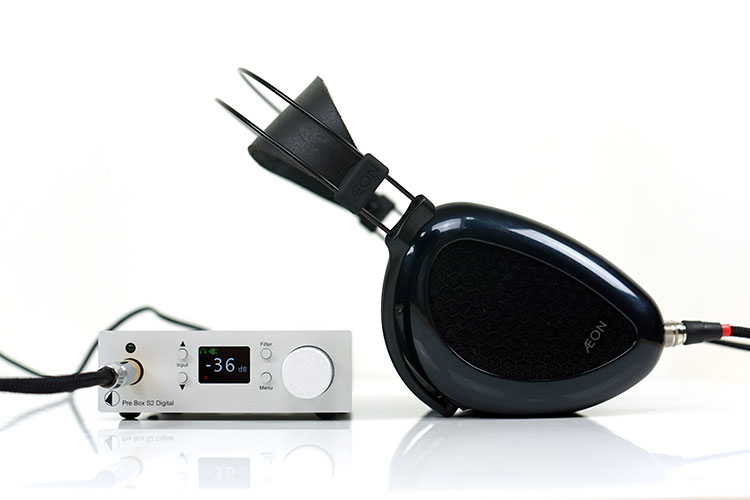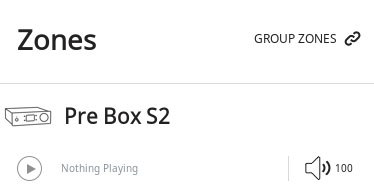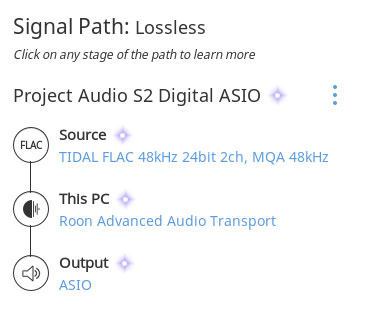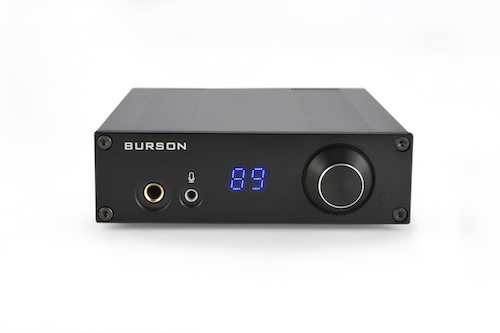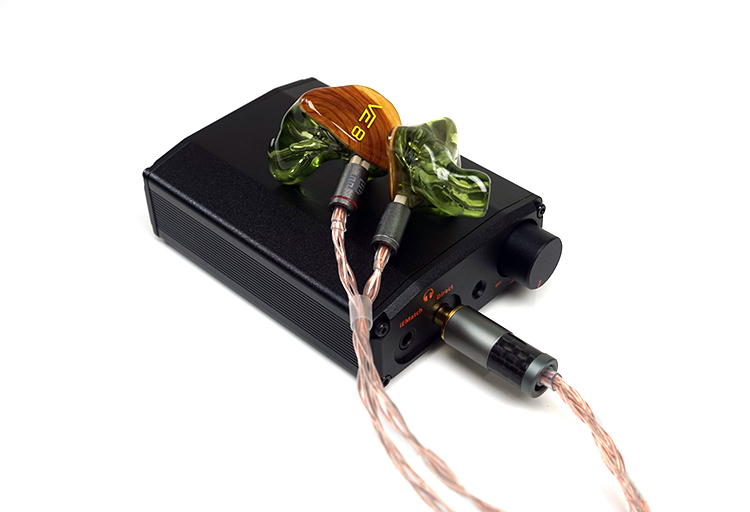Sound Impressions
Summary
Tonally, the S2D is clean and clear with a largely neutral presentation and equivalent instrumental timbre. Having heard a wide range of ES9028/38 infused devices this one doesn’t stray too far off the mark.
It may not be as resolving as the large Sonica DAC in terms of layering and instrumental separation but it does have a similar response with a very nice black background. It also has a very low noise floor suitable for a wide range of IEMs and efficient headphones.
Pleasingly it lacks any of the traditional Sabre Glare from older implementations. This is consistent with the modern ES90XX series I have been listening to over the last year or so. The older 9018 chipset implementations were often prone to lower treble harshness a few years back and for sounding overly analytical or digital sounding.
Not so the S2D. The treble delivery is excellent with pleasing levels of articulation and a top-end extension that you can fine-tune slightly with some of its digital filter options. Particularly the hybrid filter which rolls off the final octave more than the others.
If you prefer the most neutral of all filters without any attenuation then something like the Minimum Phase Fast option will be your best bet. Personally, I loved the optimal transient filter combined with the ‘Audio Best’ setting though I lost the distortion compensation enabled option which is disabled when you opt for ‘Audio Best’.
One further note, the digital filters are very nuanced in their tonal tweaks. This is not EQ so the effect is not obvious without continued listening.
Overall the S2D presentation is more linear than say an AK-infused DAC or Wolfson device but its stays impressively smooth, sibilant free and balanced sounding.
Synergy
IEMs
I have to give props to the S2D for noise levels. They are basically non-existent using the supplied DC switching supply (5V). Even without the adapter and relying on the USB the noise levels are very good indeed.
Notoriously hiss-sensitive IEMs such as the 12.5Ω Andromeda were tremendously quiet. I always contend if this IEM is quiet then all other IEMs will display the same performance and so it is the case.
On the flip side, high impedance IEMs such as the CL1 from RHA actually did ok. I would not say they are the best pairing for synergy since the CL1 always sounds better using its balanced cable with their own L1 DACAmp or a full desktop solution. However, it had enough gain to go fairly loud and didn’t come across as tinny or underpowered though it did hit around -10dB.
Headphones
For headphones, you can follow roughly the same curve though it does not collapse like a deck of cards with harder-to-drive headphones such as the HD600 and HD650. Both of these attained adequate gain around -15 to -10dB but just did have the same dynamic range and output power as a dedicated desktop amp.
High Impedance
Switching to an Essence HDACC DAC powered Cypher Labs Sustain84 tube amp setup I got more headroom, better depth, and layering than the headphone output of the S2D.
Switching the S2D to DAC and pre-amp duties with the Sustain84 changed that imbalance and produced a smoother timbre than the ES9018 HDACC. When I say smoother I am referring to the top-end. The HDACC DAC delivered a harder glassier treble attack compared to the S2D which has a bit more body and generally a better harmonic balance when used as a DAC.
Low Impedance/Planars
For more efficient headphones such as the Meze 99 Classic/Neo and even the AKG K872/812, I had no real driving issues. These headphones are between 26 and 36Ω and whilst they can scale a bit more they won’t sound lacking on the S2D.
Efficient planars such as the PM3 from Oppo and the SINE DX series from Audeze sounded great also from the headphone jack and sat around -20-15dB in terms of volume. Switching to DAC duty and the Sustain84 you did get a lift in dynamic range but the gap wasn’t huge enough for me to say the S2D could not cope.
Power Supply
Now there has been some debate on whether to use the adapter or not as the instructions manual comes with a warning not to use USB and DC power simultaneously. What I know at this stage is that this may not be the case unless you have some really wonky uneven power supplies.
In fact, testing side by side the use of DC power combined with USB was a little better than USB alone. Performance increased, dynamics were better and it lost a little softness present on USB only. Can you use a linear power supply and further reduce noise? The answer should be yes so long as you get the correct power-rated linear adapter.
Roon & TIDAL
Stunningly simple to integrate with Roon and TIDAL for regular playback of your local library and streaming. The Pre Box S2 is Roon Tested. Roon even brings up a little scaled-down drawing of the S2 in the Audio Zones setting. From there, you simply go in, pick the driver you want to use, and adjust anything else there such as DSP. Then confirm as your audio playback device and you are good to go.
Windows 10 & ASIO
Well almost good to go, particularly if you are using the latest version of Windows 10. In the latest version with the universal USB 2.0 driver, the S2D is immediately picked up and the drivers are installed for it.
In most cases, this will be enough as you can access its WASAPI driver in all software including ROON. ASIO is also possible with the S2 Digital though you will have to load the supplied ASIO drivers from the CD installation software.
However, for MQA and if you use the WASAPI drivers you have to set Roon to use it in exclusive mode, then all files will be bypassed to the DAC and MQA will be handled as MQA. This is the same for TIDAL, you have to set TIDAL accordingly. Simply go to Settings – Streaming – Pre Box S2 Digital – Settings. There you have to enable all three boxes in order to fully bypass MQA to the DAC.
Select Comparisons
Burson Play
$299 – $549
Technical
The Burson Play is a new DAC/Amp starting at $299 but can go up to $549 depending on the opamp options you choose at check out. That has been a big feature of Burson for a while now, the concept of swappable opamps to color or ‘uncolor’ the sound.
The Play is much bigger than the S2D but both feel very durable in the hand. Both come with remotes though the Burson just covers the volume settings. The Burson has less DAC filtering options, in fact, it has none.
However, it does have, as mentioned, more amping options. Both have pre-amp capability with variable line-out control via dual RCA out. The Play though only has USB input whereas the S2D offers coaxial and optical inputs.
The primary target market of the Play is gaming with its mic input as well as being able to slot into a PC gaming rig. The primary target market for the S2D is really for the modern-day streamer or desktop audiophile. It can include gaming but there is no specific mic option on it.
DAC
DAC-wise both use Sabre chips though the Play uses a single ES9018 desktop solution compared to the dual mobile-powered ES9028Q2M of the S2D. The Play will tap out at DSD256 whereas the S2D can motor onto DSD512 native and fully unfold MQA. The Play needs its own power adapter whereas the S2D can run a USB or power adapter depending on your preference for power.
Power
The biggest difference though is power. The Play can manage a huge 1W into 32Ω whereas the S2D is a mere 68mW into 32Ω. That is a big difference. The Play will happily power bigger headphones with higher impedance such as the HD600/650 and planars such as the Audeze LCD-2 with more than enough headroom. The S2D is happier with lower-efficiency headphones and IEMs.
Performance
For headphones the Play has more headroom for a wider range of headphones and its noise floor is very low for headphones such as the Hifiman Edition X v2, LCD-2, HD600, and the HD650. There are zero problems driving these and they do exhibit a greater level of dynamic range than the S2D is capable off. Given the difference in power between these two units that should not be a surprise.
Tonally they are very similar though the S2D lacks a little body compared to the Play once you start pushing it. Put it in a more comfortable driving territory and once again the treble performance is a touch smoother with slightly less glare on the S2D compared to the Play.
However, the Play has a slightly better transient response, instrumental separation, and superior or more holographic staging. Once again power does play a role in this.
Sensitive IEMs are unplayable on the Burson though. The noise floor is miles higher for IEMs under 32Ω whereas the S2D delivers near silence. The Play is really all about grunt and power and does not have the finesse of the S2D with IEMs.
NuPrime uDSD
$179
Technical
The uDSD is a matchbox-sized DAC/Amp with a modest price of $179. It has no LCD screen but it is about half the size or more compared to the S2D. the uDSD is equipped with a single ES9018K2M compared to the more modern dual ES9038Q2M of the S2D.
The decoding capability of the uDSD is up to DSD246 compared to the S2D’s higher DSD512. The dynamic range on the uDSD is somewhat lower at -98dB compared to the excellent max of 124dB of the S2D. The uDSD is not Roon Tested and cannot decode MQA.
Both have USB-powered 5v inputs though the uDSD has no external power adapter. Both have line-out via dual RCA with equivalent voltage ratings of around 2V each. Both have coaxial though the uDSD has no optical input. The uDSD is unable to tap into any digital filters or distortion compensation options.
Power
The uDSD headphone output is more powerful than the S2D at 140mW into 32Ω compared to the 68mW of the S2D and should provide more power to less efficient headphones and IEMs than the S2D. Neither comes close to the 1W output power of the Burson Play.
Performance
The uDSD has a much higher noise floor than the S2D for efficient IEMs and that takes away the performance. The S2D shows off a much blacker background, with a better dynamic range even with USB only powering it. The gap widens in terms of dynamic range performance with the S2D’s switching adapter powering the unit at the same time.
The gain of the uDSD is also much higher which in turn be affecting the noise levels. IEMs such as the Andromeda will show a level of hiss and it does seem the uDSD is more prone to EMI than the S2D.
Tonally, the uDSD is a bit harsher with its treble performance. The ES9038Q2M has a more natural tone to its timbre and better lower treble harmonic balance. As a result, the S2D sounds the more balanced to my ears whereas the uDSD has more of a digital and slightly brighter sound.
iFi Nano iDSD Black Label
$199
Technical
We just reviewed the iDSD BL, thought it was awesome at just $199 in terms of features and performance. Personally, I think the BL is targeting a slightly different market to the S2D but I can see plenty of overlap.
Both are small, transportable DAC/Amp devices targeting the desktop audiophile. The BL though also specifically targets the portable audiophile with its OTG capability and smaller form factor. The S2D is really a desktop solution though its ability to run off USB does give it more flexibility.
DAC
The BL uses a different DAC chip though, the slightly warmer and more musical sounding PCM1793. Both will decode MQA, however, the S2D is a full unfold and decode whereas the BL renders and requires the first sweep from a software program such as TIDAL. The S2D has a higher decoding capability at DSD512 compared to is DSD256 for the BL.
Filtering
The BL offers two filtering options at the rear they have called measure and listen whereas the S2D offers up to 8 digital filters plus the distortion compensation option. The BL’s is more impedance savvy, perhaps with an eye on the IEM user with its IEMatch output as well as the noisier but more powerful direct output.
Power
In terms of power, the BL has more of it with a Dual Mono 2 x 285mW Direct Drive amp stage using a 30Ω load. The S2D is limited to just 68mW on a 32Ω load. Both are not really big rig units for high impedance headphones. Once you hit 600Ω the BL will drop to 20mW and the S2D to 6.6mW.
Performance
Both are solid performers for noise though you will have to use the IEMatch output on the BL to get that black background. The S2D will give you silence regardless as it has only one output for headphones and IEMs. Both are sensitive enough to handle IEMs of any rated impedance with the BL edging ahead a little on headphones due to its higher rated power for its direct output socket.
Tonally the levels of resolution between the two are relatively similar but the tonal bias is slightly different and it does depend a bit more on the filter you choose on the BL. The BL aims for a bit more of a full-bodied smooth and euphonic sound.
It has excellent low-end weight, warmer lower-mids, and a slightly rolled-off top end with the listening filter. With the ‘measure’ filter, the BL pulls a little closer to the more neutral and cleaner sound of the S2D with a bit more vocal presence and a snappier treble response.
The S2D can be considered the marginally brighter of the two with a bit more top-end extension and superior treble articulation/presence but it is not a harsh signature by any means and provides a complimentary signature to the warmer sound of the BL. A close call for these two performance-wise.
Our Verdict
At $399 the Pre Box S2 Digital is one of those all-in-one solutions that defines what a typical 2018 digital audiophile might be looking for. Roon Tested, full MQA unfolding, a low noise floor, easily transportable, and a very likable tonal presentation with a very modern DAC chip solution inside.
This is one well-designed, feature-heavy little box and it will sit very nicely indeed right beside your PC either at home or in the office.
Do not be fooled either by the 68mW output power. True, hard-to-drive headphones will not sound optimal on the S2D but it is perfect for medium efficiency or anything really lower than 32Ω.
Given quite a lot of us are using IEMs these days you will find the S2D is so quiet and just perfect for this type of use. The fact you can use it as a pure DAC or Pre-amp also is the icing on the cake for those that want to power up stronger amps.
What is missing? Not much really, perhaps a USB cable in the box would be ideal and the option to buy a linear power supply. The inclusion of a CD is not necessary for this digital age, especially if we are targeting MQA and TIDAL users.
Other than that, it is spot on. My TIDAL subscription has been heavily abused since I turned on the S2 digital. Cheers Pro-Ject Audio for justifying my subscription!
Pro-Ject Audio Pre Box S2 Digital Specs
- Digital inputs 1x USB (B), 1x Co-axial (RCA), 1x Optical (TOSLink)
- D/A-converter 2x ESS9038Q2M 32-bit
- Playback formats USB: up to DSD512 (DSD1024), PCM up to 32b/768kHz
- Optical: PCM up to 24b/192kHz
- Coaxial: PCM up to 24b/192kHz
- Filter settings 8 different selectable on front
- Frequency response 20Hz – 20kHz
- Analogue outputs 6.3mm Headphone (front), 1x Variable Out (RCA)
- Output voltage 2,05 Veff
- Minimal recommended headphone impedance 8ohms
- Headphone output power 6,6mW/600ohms, 68mW/32ohms
- THD 0,0003% at 0dB, 2V RMS, 1kHz
- Dynamic range 124dBA
- Outboard Power supply 5V/1A DC (included)
- Dimensions W x H x D 103 x 37 x 122 mm (including knob and connectors)
- Weight (without power supply): 366g

